
Latest Editions
-
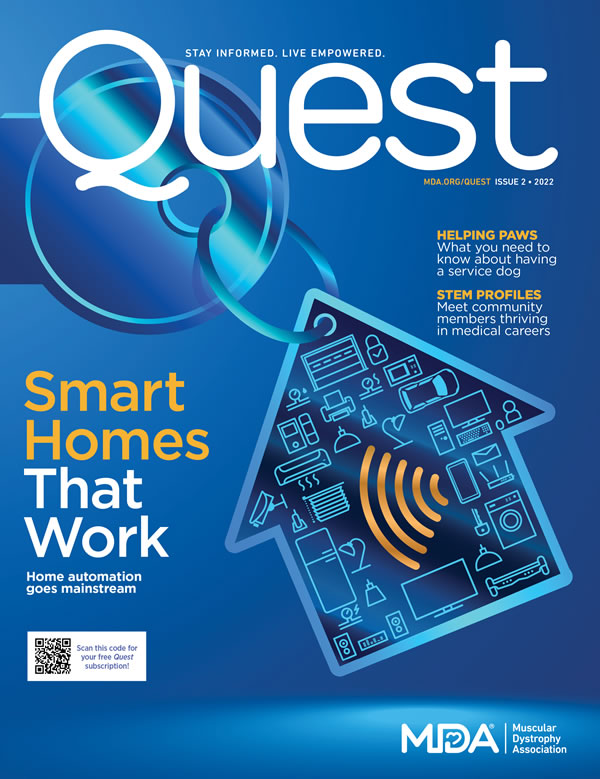 Quest Issue 2, 2022
Quest Issue 2, 2022 -
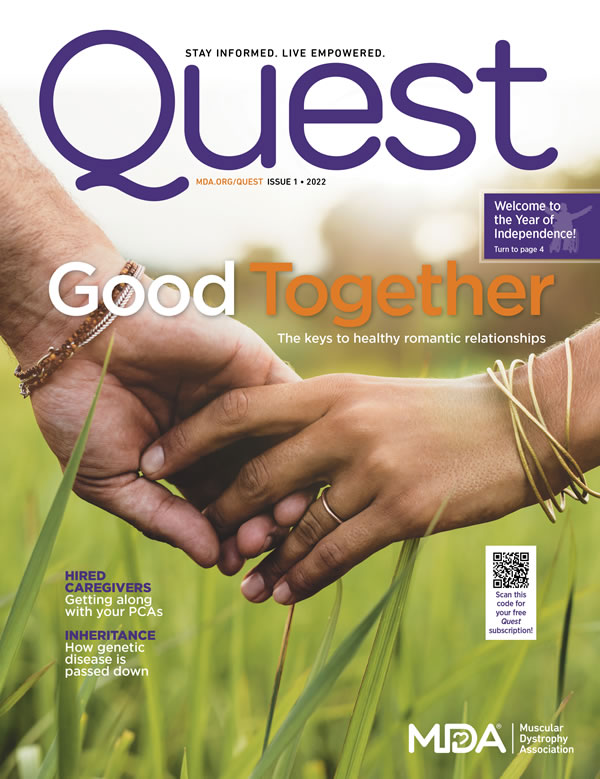 Quest Issue 1, 2022
Quest Issue 1, 2022 -
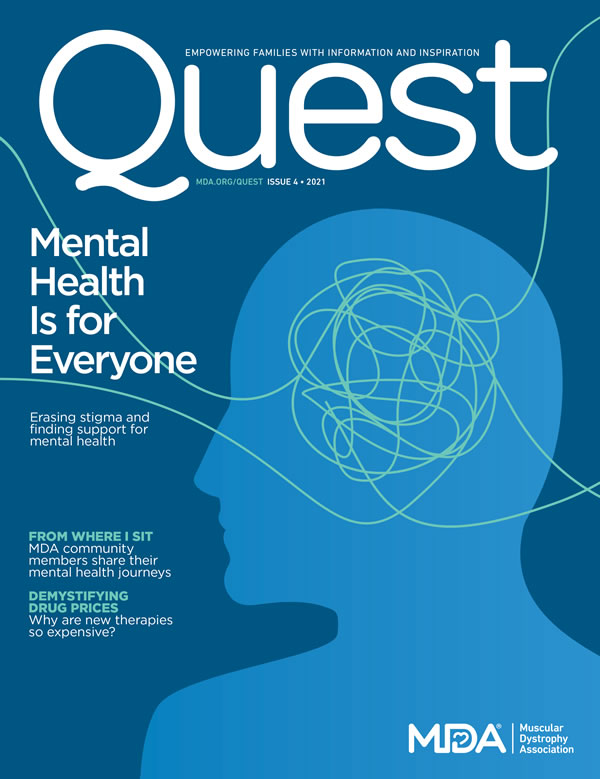 Quest Issue 4, 2021
Quest Issue 4, 2021 -
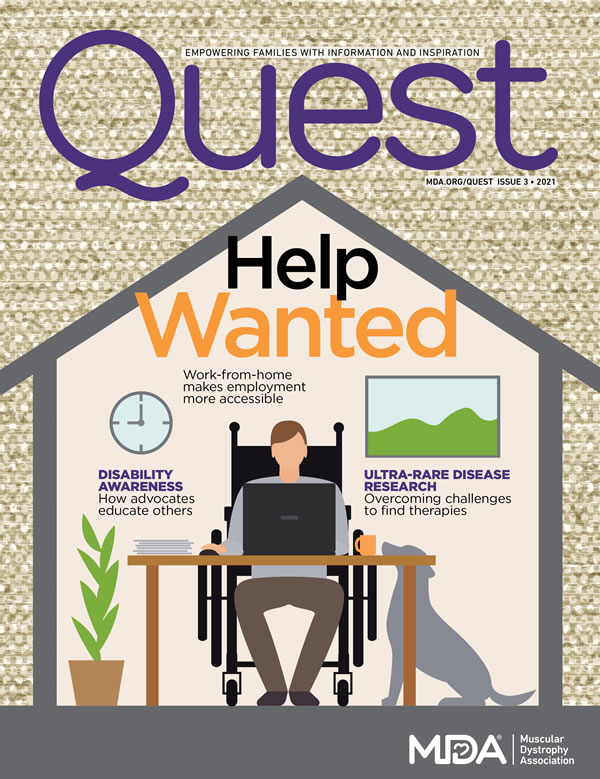 Quest Issue 3, 2021
Quest Issue 3, 2021
Recent Quest Articles
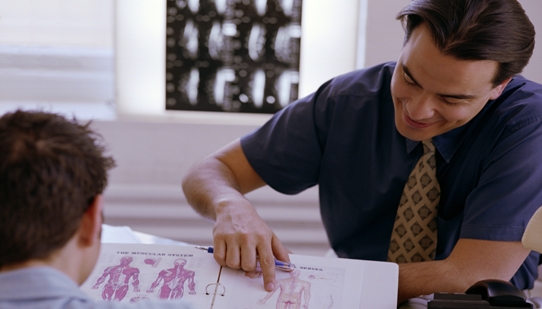
Scoliosis Surgery: Before and After
You hope it won't be necessary, but it often is: surgery to correct scoliosis, a lateral (side-to-side) curvature of the spine. Scoliosis can occur in almost any neuromuscular condition in which back muscles, which normally keep the spine straight, weaken, but it's particularly common in Duchenne muscular dystrophy (DMD) and spinal muscular atrophy (SMA).
Read MoreMedical Perspective: Scoliosis Surgery
Scoliosis and other spinal curvatures are common in neuromuscular diseases and often require surgical correction. Fortunately, today's surgeries are safer and more effective than those of earlier decades. (See Scoliosis Surgery: Setting the Record Straight, January 1997.) But that doesn't mean they're routine or simple.
Read More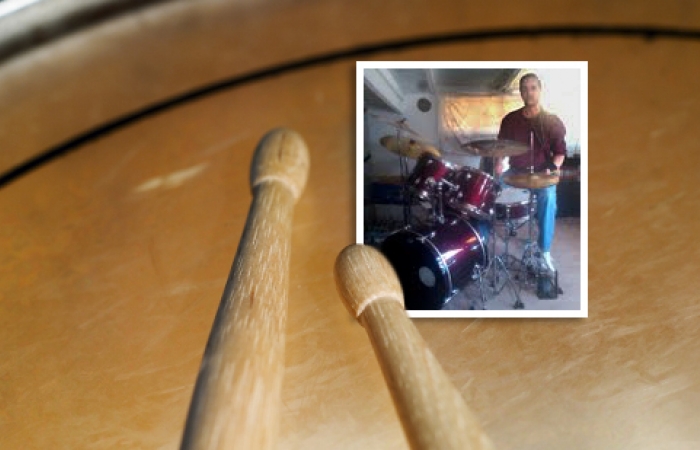
Rock 'N' Roll to Soothe the Soul
John DeGeorge, 50, of Los Angeles, works as an IT (information technology) compliance consultant to make a living, but he lives to play the drums.“I think I was born with an interest in making music, or making noise,” he says. Being the son of a former drummer with the Glenn Miller Orchestra, such a passion for music must be in the genes.
Read More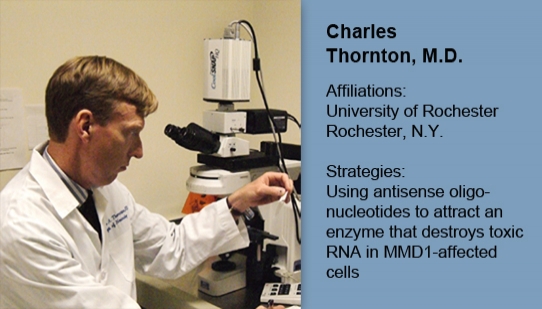
MMD Research: Multiple Strategies Make Sense
Charles Thornton, a professor of neurology at the University of Rochester (N.Y.), has received MDA support for research in myotonic muscular dystrophy (MMD, also known as DM) and other neuromuscular diseases. He's currently developing antisense oligonucleotides and small molecules for MMD. Thornton also co-directs the MDA clinic and directs the MDA/ALS Center at the University of Rochester Medical Center.
Read MoreMMD Research: Seeking to Free Proteins from a ‘Toxic Web’
The complex and multifaceted disease known as myotonic muscular dystrophy (MMD) — also known as dystrophia myotonia (DM) — was the subject of an In Focus report in the April-June 2012 Quest.Here, we delve into experimental strategies that may markedly improve the outlook for people with this disorder.
Read More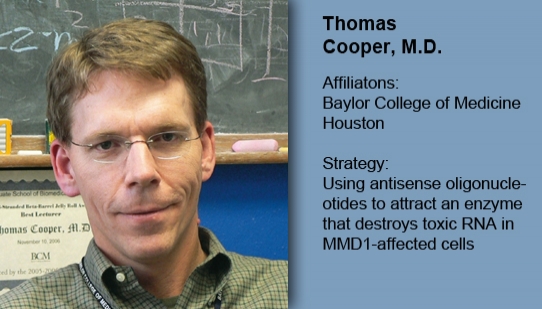
MMD Research: Targeted Destruction
Thomas Cooper, a professor in the Department of Pathology and Immunology at Baylor College of Medicine, is a longtime MDA research grantee who has current MDA support to develop oligonucleotide-based therapies for myotonic muscular dystrophy (MMD, also known as DM).Margaret Wahl, MDA's medical and science editor, talked with Cooper about his research.
Read More
SMA Research Briefs: New Gene ID'd, Disease Modifier Explored
Below are highlights of two recent studies in spinal muscular atrophy (SMA), a disease in which the nerve cells (motor neurons) that control muscles in the spinal cord die, causing progressive weakness in the voluntary muscles. Flaws in the tail-end of the cytoplasmic dynein 1 heavy chain 1 (DYNC1H1) gene lead to a rare form of SMA, a team of researchers from the United States and United Kingdom has reported.
Read More
DMD Drug SMT C1100 Moves to Human Testing
Update (May 25, 2012)- Summit announced today that the first group of healthy volunteers in the phase 1 trial of its newly formulated SMT C1100 has begun receiving the drug. The dose-escalating trial will evaluate whether the new formulation of SMT C1100 is safe and whether consistent blood levels of the drug can be achieved. Results are expected by the end of the year.
Read More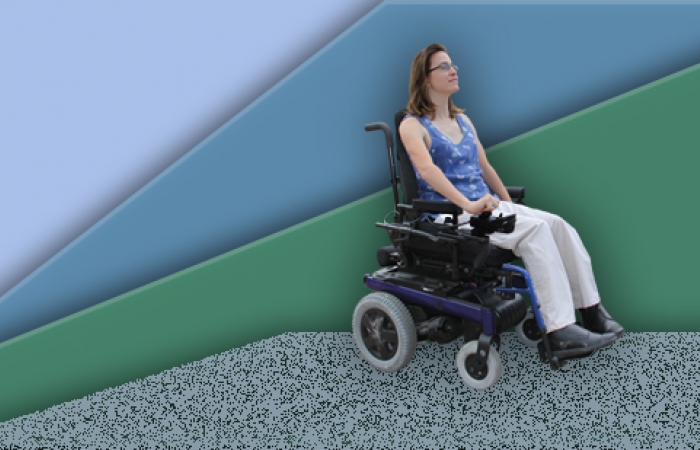
The Right Ramp Can Make Your Life Easier
Whether facing a 2-inch-high curb or a 3-foot-tall porch, the results for a person in a wheelchair can be exactly the same: no passage.The way around both these barriers is, of course, a wheelchair ramp, though they will be decidedly different. The first might be a portable, foldable aluminum device, while the second might be a large, permanent structure made of concrete or galvanized steel.
Read MoreEnergy, Dedication, Hope Help Parents of Children with Congenital MMD1
Concern about Cody Beam started right away. "About 12 minutes after he was born, he quit breathing while my husband was holding him," recalls Cody’s mother, Tina Beam, of Arlington, Wash.Cody, born at Providence Regional Medical Center in Everett, Wash., was "very floppy and couldn't swallow," Tina recalls. He was whisked away to the neonatal intensive care unit, where he was placed on a ventilator, and then transferred to Seattle Children's Hospital when he was a week old. He stayed there another three weeks.
Read MoreMDA Resource Center: We’re Here For You
Our trained specialists are here to provide one-on-one support for every part of your journey. Send a message below or call us at 1-833-ASK-MDA1 (1-833-275-6321). If you live outside the U.S., we may be able to connect you to muscular dystrophy groups in your area, but MDA programs are only available in the U.S.